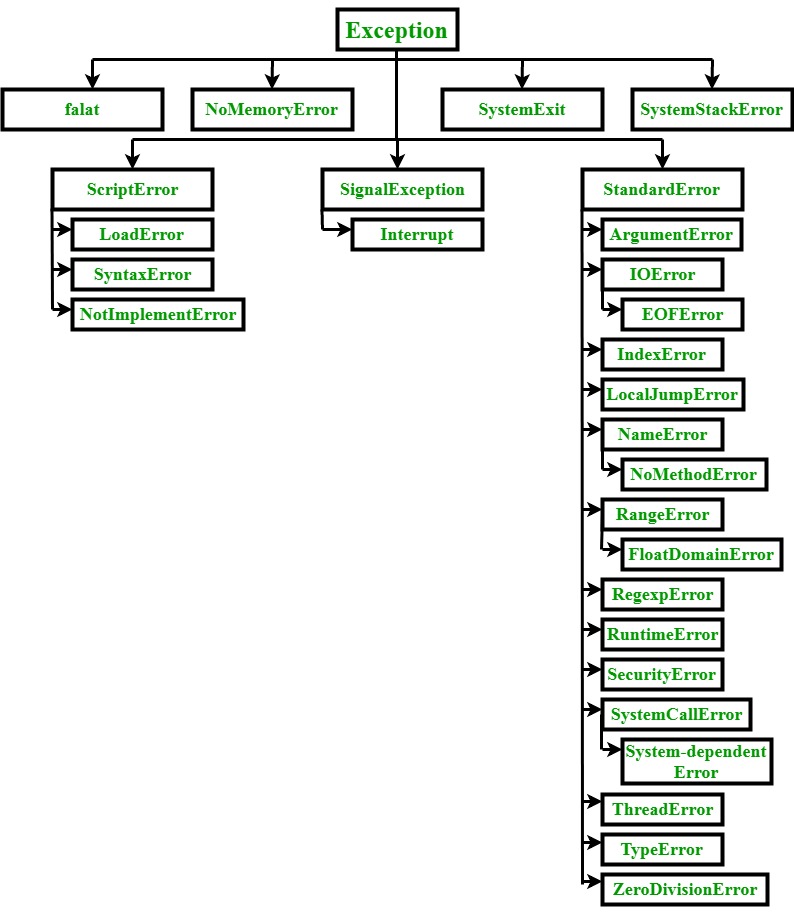Ruby | Exception Class and its Methods
Last Updated :
22 Nov, 2022
An exception is an unwanted or unexpected event, which occurs during the execution of a program, i.e. at runtime, that disrupts the normal flow of the program’s instructions. In Ruby, descendants of an Exception class are used to interface between raise methods and rescue statements in the begin or end blocks.
Exception objects carry information about the exception like its type, an optional descriptive string, and optional information.
Inbuilt subclasses of Ruby Exception are:

Exception Class Methods
- exception : This method is used to creates and returns a new exception object.
Exception.exception(message)
- new : This method creates and return a new exception object, optionally setting message to message.
Exception.new(message)
-
Ruby
class MyException < StandardError
attr_reader :myobject
def initialize(myobject)
@myobject = myobject
end
end
begin
raise MyException.new("My object"), "This is custom class"
rescue MyException => e
puts e.message
puts e.myobject
end
|
- Output:
This is custom Exception
My object
-
- backtrace : This method returns any backtrace related to exc. The backtrace is the array of string which contains either filename:line:in method or filename:line.
exc.backtrace
- Example:
Ruby
def a1
raise "OOPs! exception raise"
end
def a2
a1()
end
begin
a2()
rescue => a_Details
puts a_Details.backtrace.join("\n")
end
|
- Output:
(repl):8:in `a1'
(repl):14:in `a2'
(repl):19:in `<main>'
/run_dir/repl.rb:38:in `eval'
/run_dir/repl.rb:38:in `run'
/run_dir/repl.rb:54:in `handle_eval'
/run_dir/repl.rb:170:in `start'
/run_dir/repl.rb:177:in `start'
/run_dir/repl.rb:181:in `<main>'
/pre>
- exception : With no argument, or if the argument is the same as the receiver, return the receiver. Otherwise, create a new exception object of the same class as the receiver, but with a message equal to string.to_str.
exc.exception(message)
- message : This method return a message which is related to exc.
exc.message
- set_backtrace : This method sets the backtrace information related to exc. The argument of this must be an array of String objects in the format that is described in Exception#backtrace.
exc.set_backtrace(array)
- to_s : This method returns the message related to exc or return name of the exception if no message set.
exc.to_s
- Example:
Ruby
begin
raise "Ruby Exception"
rescue Exception => a
puts a.to_s
end
|
- Output:
Ruby Exception
- inspect : This method return exception’s class name and message.
exc.inspect
- cause : This method return the previous exception at the time when exc raise.
- == : this method return true if the object and exc share same class, message and backtrace. Otherwise, it return false.
exc==obj
Like Article
Suggest improvement
Share your thoughts in the comments
Please Login to comment...